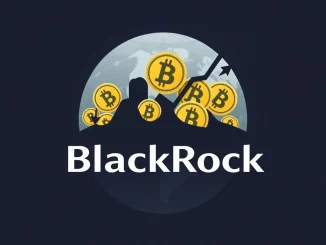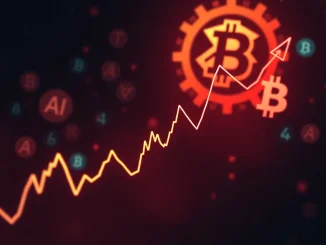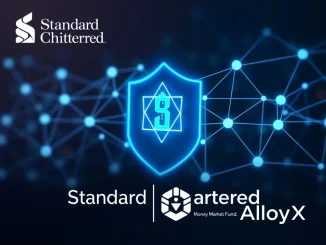
Welcome to the fascinating world of cryptocurrency, where every transaction tells a story. Recently, the Bitcoin network saw something truly out of the ordinary: a single transaction with an astonishingly high Bitcoin transaction fee. This isn’t your everyday crypto news; it’s a head-scratcher that has the community buzzing.
What Exactly Happened with This High Bitcoin Fee?
According to data from the popular Bitcoin explorer Mempool, a lone transaction stood out from the crowd. It wasn’t the amount of Bitcoin being sent, but the cost to send it. The fee attached to this single transaction was a staggering 1 BTC. At current market prices, this translates to tens of thousands of dollars, far exceeding typical transaction costs.
- The Event: A single Bitcoin transaction included a 1 BTC fee.
- Confirmation: It was confirmed quickly, approximately 30 minutes prior to initial reports.
- Block Details: The transaction was included in block 897,818.
- Source: Data confirmed via Bitcoin explorer Mempool.
To put this into perspective, the average Bitcoin transaction fee typically ranges from a few dollars to maybe a few hundred dollars during periods of high network congestion. Paying 1 BTC fee for a single transaction is almost unheard of outside of potential errors or highly unusual circumstances.
Why Would Someone Pay Such a High 1 BTC Fee?
This is the central question puzzling observers. Several theories are circulating within the crypto news sphere and on social media:
- User Error (Fat Finger): The most common explanation for such anomalies is a simple mistake. The user might have accidentally entered the transaction amount into the fee field, or vice-versa, or there was a miscalculation in their wallet software.
- Wallet Software Glitch: Less common, but possible, is an error within the wallet software itself that incorrectly calculated or assigned the fee.
- Extreme Urgency: While a high fee speeds up confirmation, 1 BTC is vastly more than required even for near-instant inclusion in the next block. This reason alone doesn’t fully explain the amount.
- Obscurity/Testing: Some speculate it could be related to testing specific transaction types or even an attempt (though likely ineffective) to make the transaction stand out in a way that complicates tracking.
- Sending a Signal: In the early days, high fees were sometimes used symbolically, though this is rare now.
- Compromised Wallet: Though less likely for just a fee, it’s a remote possibility in some complex scenarios.
Without direct confirmation from the sender, the exact reason for this specific high Bitcoin fee remains a mystery.
What Does This Mean for the Bitcoin Network?
While a single transaction with a 1 BTC fee is notable, it doesn’t fundamentally change the underlying mechanics of the Bitcoin network. However, it does have immediate impacts:
- Miner Benefit: The miner who successfully mined block 897,818 received this massive fee, adding significantly to their block reward (which also includes the block subsidy). This is a huge windfall for that specific mining pool.
- Fee Market Impact: One unusually large fee doesn’t drastically alter the overall fee market, which is driven by the collective demand for block space. However, it gets attention and is a data point for fee analysis.
- Network Health: The network processed the transaction exactly as designed – users propose fees, miners prioritize based on fees. This event confirms the system is working, albeit with an extreme data point.
How Do Bitcoin Transaction Fees Normally Work?
Understanding how fees usually function makes this 1 BTC fee event even more striking. Fees are essentially payments to miners for including your transaction in a block. The fee amount influences how quickly your transaction is confirmed. Here’s a simple breakdown:
Bitcoin blocks have a limited size. Transactions compete for this limited space. Users attach a fee, typically measured in satoshis per virtual byte (sats/vB). Miners prioritize transactions with higher sats/vB rates because it makes mining more profitable. During peak times, demand for block space is high, and fees rise. During quieter times, fees are low.
| Fee Type | Typical Range (USD) | Confirmation Speed |
|---|---|---|
| Low Priority | $1 – $5 | Hours to Days |
| Medium Priority | $5 – $20 | Minutes to Hours |
| High Priority | $20 – $100+ | Minutes (next few blocks) |
| This 1 BTC Fee | Tens of Thousands | Near-Instant (confirmed quickly) |
As you can see, a high Bitcoin fee like 1 BTC is orders of magnitude above even high-priority fees.
Actionable Insights: Avoiding Excessive Fees
While this 1 BTC fee is likely an anomaly, it serves as a reminder to be careful when sending Bitcoin. Here are some tips:
- Double-Check Fee Estimates: Most modern wallets provide fee estimates. Review these carefully before confirming a transaction.
- Understand Fee Units: Pay attention to whether the fee is shown in BTC, satoshis, or satoshis per byte.
- Use Reputable Wallets: Ensure your wallet software is up-to-date and from a trusted source to minimize the risk of glitches.
- Monitor Network Conditions: If your transaction isn’t urgent, sending it during off-peak hours can result in significantly lower fees. Use block explorers like Mempool to gauge current network congestion and typical fees.
Staying informed about the Bitcoin network and typical fee structures is key for anyone engaging with crypto news and using cryptocurrency.
Compelling Summary
The sighting of a single Bitcoin transaction fee of 1 BTC is a rare and intriguing event on the Bitcoin network. While the exact reason for this high Bitcoin fee remains unconfirmed, it highlights the potential for errors in cryptocurrency transactions and the significant rewards miners can receive. For the average user, this serves as a powerful reminder to exercise caution, double-check transaction details, and understand how fees function to avoid inadvertently paying a similarly astronomical 1 BTC fee. As the world of crypto news continues to evolve, such unusual occurrences remind us of both the robust mechanics and the human element involved in decentralized finance.



